

From: Berhane Habtemariam (Berhane.Habtemariam@gmx.de)
Date: Fri Apr 09 2010 - 05:45:13 EDT
<http://ifad-un.blogspot.com/2010/04/eritrea-fishery-sector-untapped-and.htm
l> Eritrea fishery sector: An untapped and renewable gold mine
Posted by Roxanna Samii Thursday, April 8, 2010
<http://1.bp.blogspot.com/_YI7ppcKmicc/S72RN1dmGUI/AAAAAAAAGNg/crzk0-TQktg/s
1600/sea.jpg>
http://1.bp.blogspot.com/_YI7ppcKmicc/S72RN1dmGUI/AAAAAAAAGNg/crzk0-TQktg/s2
00/sea.jpgI first visited Eritrea in 2008 and it was love at first sight. In
December 2009 when I landed in Asmara airport, I felt like I was back home.
I spent my first couple of days visiting the
<http://ifad-un.blogspot.com/2009/12/impact-of-climate-change-on-eritrean.ht
ml> irrigation schemes in zoba Debub and then went east to zoba Northern Red
Sea where I visited Massawa, the capital city of Northern Red Sea Zoba which
is the centre of Eritrea's fishing industry. Massawa is one of the hottest
places on earth, with temperatures soaring well above 40C (104F) and 80% or
more humidity for much of the year. Yet, like rest of this beautiful
country, it has its charm.
<http://2.bp.blogspot.com/_YI7ppcKmicc/S7zYivatvsI/AAAAAAAAGM4/7lG9oTQb4L0/s
1600/salt.jpg>
http://2.bp.blogspot.com/_YI7ppcKmicc/S7zYivatvsI/AAAAAAAAGM4/7lG9oTQb4L0/s2
00/salt.jpgEritrea is a relatively rich country in terms of natural
resources. It has gold, potash, zinc, copper and salt. What is perhaps less
known is the fact that Eritrea also has significant fisheries resources and
that 20% of the coastal population's livelihoods depends on fisheries.
However, unlike the gold or copper, fisheries resources, if properly
managed, can continuously provide food, employment and income to the coastal
communities.
Eritrea's 1,200km coastline is highly favourable for artisanal fishing
offering rich and varied fish stocks and sheltered fishing grounds. Unlike
artisanal fishers in other parts of the world, Eritrean fishers have not
overexploited their resources and could potentially increase their catch
from the few thousand tons per year to at least 40,000 if not 80,000 tons
per year.
Their fish stocks include lizard fish, threadfin breams, and catfish (soft
bottom demersal); snappers, emperors, grunts, job fish and groupers (hard
bottom demersal and reef fishes); sardines and anchovies (small pelagic);
tunas, mackerels and sharks (large pelagic); shrimp, crabs, lobsters
(crustaceans); and squids and octopus and cuttlefish (cephalopods).
"Eritrea's fisheries sector has the potential to contribute substantively to
our national food security and can play an important role in reducing
poverty in coastal areas", says Andom Ghebretensae, Director-General
Regulatory Services. "Currently we have 3,000 licensed artisanal fishers.
Eritrea's coast not only is rich in fisheries resources but also has great
potential for tourism."
<http://2.bp.blogspot.com/_YI7ppcKmicc/S7zTmdmKv9I/AAAAAAAAGLw/-m2ngVaSGpQ/s
1600/erifish.jpg>
http://2.bp.blogspot.com/_YI7ppcKmicc/S7zTmdmKv9I/AAAAAAAAGLw/-m2ngVaSGpQ/s2
00/erifish.jpgThe Government of Eritrea has long recognized this potential
and in collaboration with a number of donors such as the African Development
Bank and the European Union has built EU standard landing and processing
sites. These sites are fully equipped with processing and storage
facilities, where trained personnel weigh, process and grade the catch.
Eritrea's fish exports may have been low in recent years (approximately
234mt in 2008), however, thanks to the upgrading of landing and processing
facilities, today Eritrea is eligible to export fish products to European
Union countries.
Eritrean artisanal fishers aspire to become entrepreneurs
<http://3.bp.blogspot.com/_YI7ppcKmicc/S7zUtKBQvoI/AAAAAAAAGMY/EAQopORJf7A/s
1600/houri.jpg>
http://3.bp.blogspot.com/_YI7ppcKmicc/S7zUtKBQvoI/AAAAAAAAGMY/EAQopORJf7A/s2
00/houri.jpgEritrean artisanal fishers use two types of fishing boats -
houris or sambuks. Houris constitute 80% of the fishing fleet. These are
wooden boats and measure anywhere between 8-13 metres. It has an outboard
engine and can take up to five people on board.
Sambuk, 16 metre wooden boat with an inboard engine, constitute
approximately 9% of the fishing fleet. Sambuks can take up to nine people on
board.
The remaining 11% is made up of fibreglass reinforced plastic boats imported
from Saudi Arabia or Yemen, although some are also being built in Eritrea.
"I have a traditional wooden boat called a houri which I bought thanks to a
5 year loan", says Ahmed Hamid, an artisanal fisher. "There are three of us
and with our boat we can go between 8-10 kilometres from the shore and we
can always count on an average catch of 800 kilos".
"During the fishing season - which is approximately seven months - we make
about 2-3 fishing expeditions per month. We use small nets and usually stay
out in the sea for an average of 10 days", explains Hamid.
<http://2.bp.blogspot.com/_YI7ppcKmicc/S7zTmO4zF9I/AAAAAAAAGLo/zGhuwtNWSIE/s
1600/blue.jpg>
http://2.bp.blogspot.com/_YI7ppcKmicc/S7zTmO4zF9I/AAAAAAAAGLo/zGhuwtNWSIE/s2
00/blue.jpg"We buy ice from Massawa Fish Landing centre for 0.80 nakfa per
kilo and use it to preserve the fish on board", says Hamid proudly. "We sell
our entire catch to National Fisheries Corporation which then sells it to
processors such as Erifish. They buy the snappers for 22 nakfa per kilo and
the groupers go for 25 nakfa. And we use 20% of our catch to repay the
loan".
On the landing site, Hamid and his fellow fishers unload their 800 kilo of
first class tuna, snappers, emperor and groupers in big blue containers.
Their catch is immediately taken next door to the EU certified Erifish
processing plant, where a team of 24 people degut, process and packaged the
fish for export.
<http://1.bp.blogspot.com/_YI7ppcKmicc/S7zUtox0--I/AAAAAAAAGMo/Z-4kBUlzLh0/s
1600/mobile.jpg>
http://1.bp.blogspot.com/_YI7ppcKmicc/S7zUtox0--I/AAAAAAAAGMo/Z-4kBUlzLh0/s2
00/mobile.jpg"I have everything I need on my traditional boat - a cellphone,
my medical kit and a transistor radio - but I would like to buy fibre glass
reinforced boat, so that we can stay a maximum of a month and come back with
an average catch of 1.5 tons", said Hamid with a smile. "And I look forward
to the day when I am able to sell part of my catch freely on the market".
Fisheries sector can help ensure national food security and provide
investment opportunities
<http://2.bp.blogspot.com/_YI7ppcKmicc/S7zUtzVU9tI/AAAAAAAAGMw/KOABgKYqhKE/s
1600/processedfish.jpg>
http://2.bp.blogspot.com/_YI7ppcKmicc/S7zUtzVU9tI/AAAAAAAAGMw/KOABgKYqhKE/s2
00/processedfish.jpgIn Eritrea, meat is the preferred source of protein.
Fish consumption is estimated at 0.5-1kg/person/year which is low compared
both to the average Africa consumption, estimated at 8kg/person/year.
"We need to encourage our people to eat more fish and to consider fish as an
alternative source of protein", says Seid Mohamed Abrar, Director, Office of
the Minister of Marine Resources.
<http://3.bp.blogspot.com/_YI7ppcKmicc/S7zYkHtk9hI/AAAAAAAAGNY/h0hwnvcI4wg/s
1600/warehouse.jpg>
http://3.bp.blogspot.com/_YI7ppcKmicc/S7zYkHtk9hI/AAAAAAAAGNY/h0hwnvcI4wg/s2
00/warehouse.jpg"We have high market value fish and we can fish
approximately 80,000 tons per year without any risk of depleting the fish
stock", says Abrar. "By exploiting our fisheries resources, we can
contribute to ensuring food security for our coastal population and help the
artisanal fishers to improve their livelihoods."
This is why the Government of Eritrea requested IFAD's assistance to design
a fisheries development project to support artisanal fishers in the Red Sea
coastal regions.
<http://2.bp.blogspot.com/_YI7ppcKmicc/S7zYi-v883I/AAAAAAAAGNA/Ep93UsKh1h8/s
1600/scale.jpg>
http://2.bp.blogspot.com/_YI7ppcKmicc/S7zYi-v883I/AAAAAAAAGNA/Ep93UsKh1h8/s2
00/scale.jpg"The IFAD-funded Fisheries Development Project under the
auspices of the Ministry of Marine Resources will reorganize and strengthen
fishers' cooperatives and support artisanal fishers so that they can
increase their incomes and improve their food security", says Abla
Benhammouche, Country Programme Manager for Eritrea. "This project will help
Minister of Marine Resources to make the fisheries sector sustainable and at
the same time reduce illegal, unregulated and unreported fishing."
The Fisheries Development Project will build the capacity of fishers such as
Hamid and equip them with modern fishing techniques and better and secure
boats and fishing gears. At the same time, the project will encourage
private sector initiatives to add value to the processing and packaging
process, also build the capacity of Erifish to better market the catch
domestically and expand their export markets.
To support private sector investment, artisanal fishers such as Hamid will
be allowed to sell 20% of their catch to private processors and traders,
with the prospect of increasing this percentage as private sector further
develops.
Last but not least, private sector investment can help transform Eritrea's
Red Sea coast into a flourishing tourist resort, offering spectacular diving
opportunities and uncontaminated beaches. "We can become a viable rival to
other Red Sea resorts such as Sharm el-Sheikh", says a proud Abrar.
Legacy of a visionary American biologist: Mangroves for all
<http://2.bp.blogspot.com/_YI7ppcKmicc/S7zTnoxxoQI/AAAAAAAAGMA/_LjdIOOLA5o/s
1600/fresh.jpg>
http://2.bp.blogspot.com/_YI7ppcKmicc/S7zTnoxxoQI/AAAAAAAAGMA/_LjdIOOLA5o/s2
00/fresh.jpgDuring World War II Dr Gordon Sato, a biologist spent some time
in a concentration camp called Manzanar in California desert. During his
internment he developed his vision of eradicating hunger by enabling African
nations to feed themselves. He invested half a million dollar of his own
money in the Manzanar Project.
This visionary philanthropic scientist conceived this project as low-tech
solution to hunger and poverty and to combat the impact of climate change,
when climate change was neither on the international agenda nor on the talk
of the town!
<http://4.bp.blogspot.com/_YI7ppcKmicc/S7zTnRh4wFI/AAAAAAAAGL4/9VaQLkyelfQ/s
1600/feed.jpg>
http://4.bp.blogspot.com/_YI7ppcKmicc/S7zTnRh4wFI/AAAAAAAAGL4/9VaQLkyelfQ/s2
00/feed.jpgThe project started during the 30-year war to win independence
from Ethiopia. Sato first joined the Eritrean fighters in 1987 and
introduced fish farming. He succeeded in growing fish and providing high
protein food for the wounded. After the war, he focused on issues related to
economic development and applied what he knew best - biological principles -
to develop a self-sufficient economy in a country that is prone to drought
and famine.
However, soon he saw the potential of mangroves to increase food production
all the way up the food chain.
<http://2.bp.blogspot.com/_YI7ppcKmicc/S7zUtWwWwxI/AAAAAAAAGMg/nLzU9pN3tYE/s
1600/mangrove.jpg>
http://2.bp.blogspot.com/_YI7ppcKmicc/S7zUtWwWwxI/AAAAAAAAGMg/nLzU9pN3tYE/s2
00/mangrove.jpgIn an interview, Sato said: "I was in an area with mangrove
trees, and I noticed the camels eating them. I got the idea that the trees
could also supply food for sheep and goats. There was lots of available
space for growing mangroves, so it seemed like an obvious solution.
Initially, I had to figure out how best to grow them and how to make the
mangroves good food. We found that mangroves would be adequate food for
livestock, as long as they were supplemented by a small amount of fish meal
prepared from fish waste."
<http://1.bp.blogspot.com/_YI7ppcKmicc/S7zUsxd32hI/AAAAAAAAGMQ/vgJGzcW_AH4/s
1600/goats.jpg>
http://1.bp.blogspot.com/_YI7ppcKmicc/S7zUsxd32hI/AAAAAAAAGMQ/vgJGzcW_AH4/s2
00/goats.jpgYears later, thanks to the Manzanar project and Sato's legacy,
Eritreans are using fresh leaves and dried mangrove seeds as livestock feed.
This project has also taught herders that the seaweed that washes up on
shore can be dried, processed and used as animal feed.
Ammanuel Yemane, Manzanar project manager, takes pride to showcase Sato's
teaching. Sato and his team reached the conclusion the mangroves were
growing in areas where rainwater was washing into the sea. The rain was
providing nitrogen, phosphorous and iron - elements lacking in seawater. The
team buried the seeds with a piece of iron and a punctured bag of fertiliser
rich in nitrogen and phosphorous and saw the mangroves flourishing.
<http://4.bp.blogspot.com/_YI7ppcKmicc/S7zYj4yaqVI/AAAAAAAAGNQ/INd6PHZaes0/s
1600/tin.jpg>
http://4.bp.blogspot.com/_YI7ppcKmicc/S7zYj4yaqVI/AAAAAAAAGNQ/INd6PHZaes0/s2
00/tin.jpgToday, Yemane and his team work with women, men, herders and
fishers of Hirgigo village to teach them how to use the same technique to
plant mangroves so that they can effectively address sustainable resource
issues such as providing food for livestock, protecting the fish and
preventing deforestation. "The village is now learning to manage the
mangroves and we can recover the lost mangroves in approximately 6 months",
comments Yemane.
The IFAD-funded Fisheries Development Project will join forces with Yemane
and his young group of dedicated and passionate Eritrean to support the
rehabilitation of the mangroves and to:
* build capacity of fishers to develop viable and sustainable business
plans
* teach fishers how to protect marine natural resources such as the
coral reefs
* teach fishers to form cooperatives
* organize exchange visits
<http://3.bp.blogspot.com/_YI7ppcKmicc/S7zTn1jFE6I/AAAAAAAAGMI/jINYwdl192I/s
1600/future.jpg>
http://3.bp.blogspot.com/_YI7ppcKmicc/S7zTn1jFE6I/AAAAAAAAGMI/jINYwdl192I/s2
00/future.jpgA brighter future
Through out their history Eritrean people repeatedly have shown their
resilience and resoluteness. It goes without saying that they will be able
to unleash the potential of their untapped gold mine - their fisheries
sector - in the most sustainable manner and as a result contribute
substantively to improve the livelihoods of the coastal population and
create a vibrant local private sector.
Watch short video of Eritrean fishers unloaded their first class catch
http://ifad-un.blogspot.com/2010/04/eritrea-fishery-sector-untapped-and.html
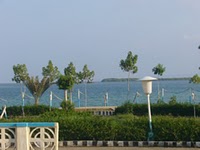
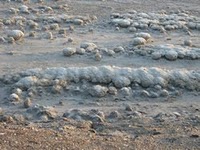
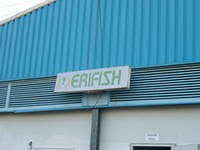
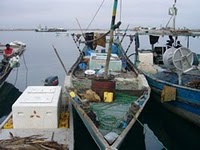
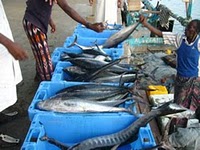
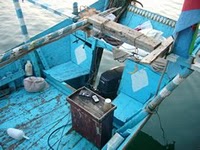
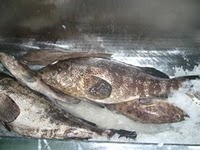
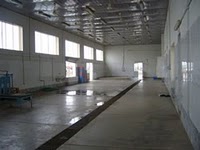
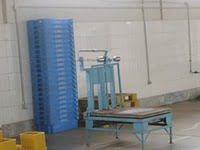
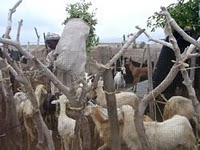
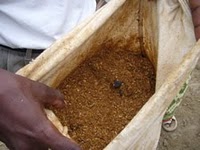
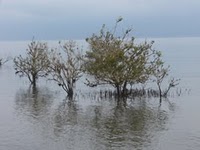
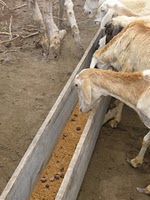
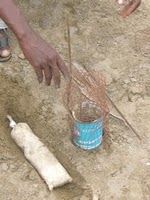
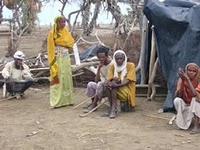
----[This List to be used for Eritrea Related News Only]----
